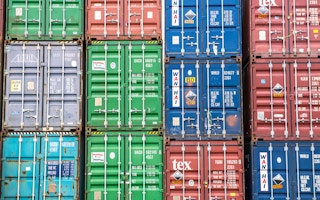As much as US$673 billion (or 26 per cent) can be saved annually in the Asia Pacific region if the World Trade Organisation’s Trade Facilitation Agreement and digital and paperless trade measures are fully implemented, according to the Digital Trade Facilitation in Asia and the Pacific report.
Launched in March by the ESCAP (United Nations Economic and Social Commission for Asia and the Pacific), the report said that Least Developed Countries such as Bangladesh, and Pacific Island nations like Samoa, could boost profits by more than 30 per cent from trade innovation while the ASEAN states and South Asian countries stand to cut trading costs by 15 and 20 per cent, respectively. Such savings could provide them with funds to boost development and poverty alleviation programs.
In a press release, ESCAP estimates that by boosting digital trade facilitation and paperless trade measures to China’s level, the Asia Pacific region could raise GDP by more than 3.8 per cent.
“
Digitalisation, along with institutional coordination, is a great tool to further enhance trade facilitation implementation and reduce trade costs.
Cyn-Young Park, Asian Development Bank
The Asian Development Bank (ADB) defines digital trade facilitation as the “application of modern information and communication technologies to simplify and automate international trade procedures.”
Cyn-Young Park, a director at the ADB tells SciDev.Net: “Digitalisation, along with institutional coordination, is a great tool to further enhance trade facilitation implementation and reduce trade costs.”
Mia Mikic, director of the Trade, Investment, and Innovation Division at ESCAP, says that “customs and tax procedures and cargo inspections account for up to 75 per cent delay of shipments, and that ‘red tape’ could cost up to 15 per cent of the value of goods traded.”
Several countries have incorporated elements of paperless trade in cross-border trade transactions. Mikic says that Thailand, by investing US$31 million in paperless transactions, saved about US$1.5 billion.
In March, India announced the launch of the Indian Customs Electronic Commerce/Electronic Data interchange Gateway (ICEGATE) to handle 98 per cent of the country’s imports and exports in real time and provide an electronic interface for the trade, transport, banks and regulatory agencies.
Currently, according to Park, East Asia has the highest implementation rate for trade facilitation and paperless trade in the Asia and Pacific region at 73.7 percent, after Australia and New Zealand.
Mikic says cross-border paperless trade could improve with the adoption of common international standards, harmonisation of legal frameworks, and building intergovernmental coordination mechanisms and infrastructure.
This piece was produced by SciDev.Net’s Asia & Pacific desk.
This article was originally published on SciDev.Net. Read the original article.








